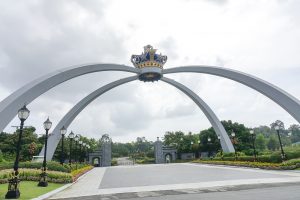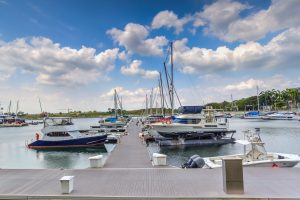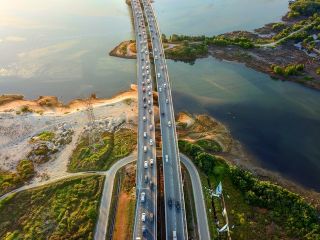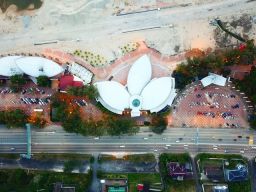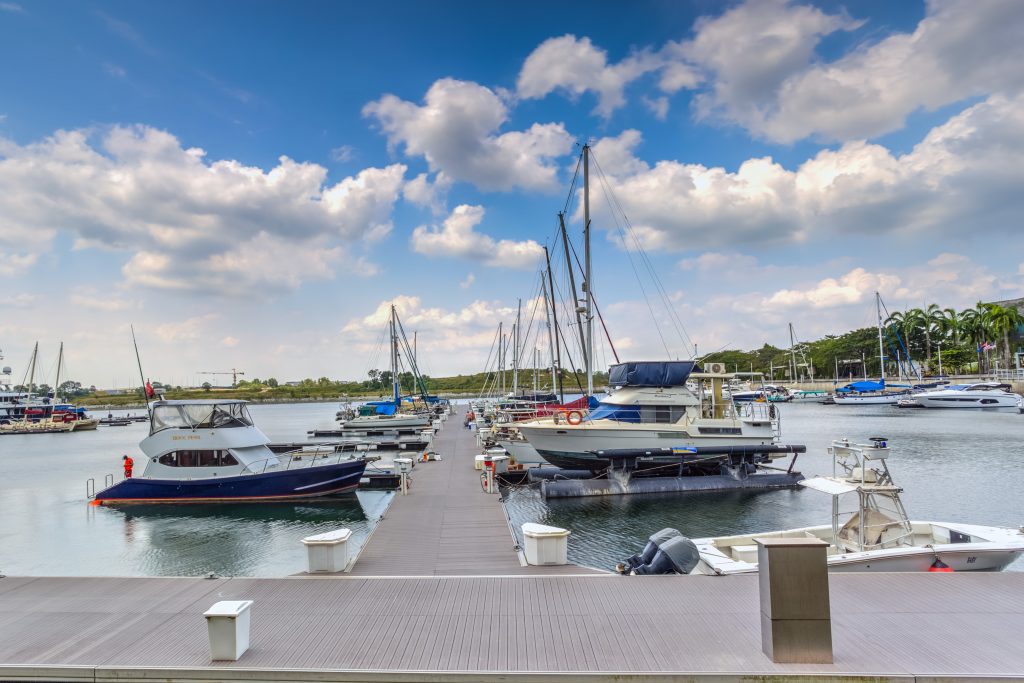HISTORY
Johor Bahru, like most Malaysian towns and cities, has a relatively new history dating back just over 150 years. It was founded in 1855 by the state’s ruler Temenggong Daing Ibrahim, who set up his administrative headquarters at a fishing village called Tanjung Puteri. The early Chinese who arrived in the mid 19th century during the reign of Temenggong Daeng Ibrahim referred to the new settlement as “Little Swatow (Shantou)” as most of them were from the Teochew community whose ancestry can be traced to Shantou, China.
It was first renamed Iskandar Puteri in 1858. A few years later and now a small town, it was given its present-day name by Ibrahim’s son, Temenggong Abu Bakar, on the first day of 1866, to mark the opening ceremony of its renowned Istana Besar.

Sultan Abu Bakar State Mosque Building Front Entrance, Johor Bahru
The village rapidly grew into a town during the reign of Abu Bakar. A number of Johor Bahru’s most famous landmarks, including Istana Besar, the residence of the Menteri Besar and the Sultan Abu Bakar State Mosque (Masjid Negeri), were built during this time. Abu Bakar’s rule in which he was responsible for building the town’s infrastructure and boosting the state’s agriculture based economy was highlighted by the British recognition of him as Sultan.
A key personality in this early period of the town’s history was Wong Ah Fook who had close links with the Johor sultan and established himself in building construction and as an influential entrepreneur. Wong is credited with building the Istana Besar, Istana Zahariah, Balai Zahariah and the Johor Bahru Prison and various shops and buildings found in the city today.
Although the British had long been advisers to Johor, the Sultanate never came under the same direct colonial rule as in the Federated Malay States of Perak, Pahang, Negeri Sembilan and Selangor. The direct colonial rule only came into effect when the status of the adviser was elevated to a status similar to that of a Resident in the FMS during the reign of Sultan Ibrahim in 1914.
In the first decade of the 20th century the town’s development was boosted by the completed work to lengthen the Malay Peninsula railway. In 1923, the Johor Bahru Causeway connecting the Malay Peninsula and Singapore by road and rail was opened. The town’s development was not rapid during the World Wars, although the Sultan Ibrahim Building – the state secretariat building – was finished in the early 1940s. In essence, the rise of the town prior to independence was tied to the fortunes of Singapore.
After Merdeka and especially since the last three decades, industrial estates and new suburbs have emerged on both the northern and eastern sides of the town, including Plentong and Tebrau. On 1st January 1994, the town was officially recognised as a city. The Dataran Bandaraya Johor Bahru, the city’s principal public place was built for this significant event.
The city’s continued expansion since then has seen it become the second largest urban area in the country next to Kuala Lumpur.





